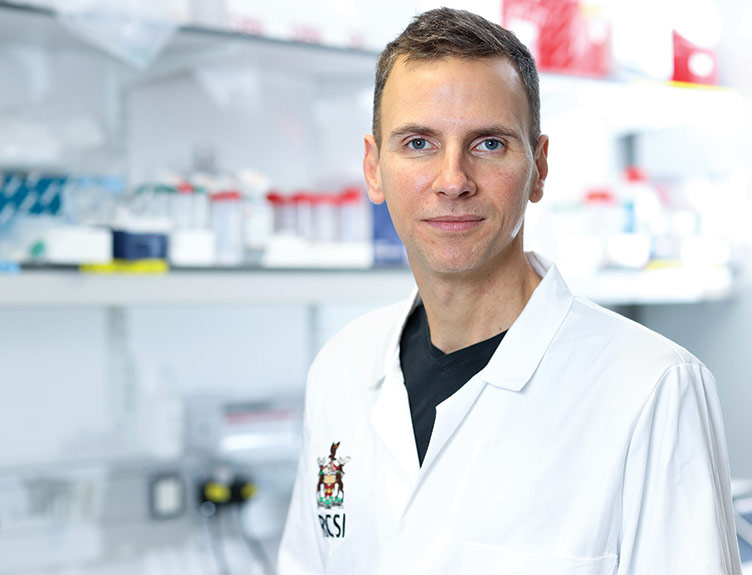Sepsis breakthrough as new drug may prevent disease from becoming life-threatening

A potential new treatment option for sepsis has been identified by researchers at the RCSI's Irish Centre for Vascular Biology which has the potential to prevent sepsis from progressing through the body and becoming a life-threatening condition.
Cases of sepsis are more common than heart attacks, claims more lives than cancer every year and affects an estimated 30 million people every year worldwide. With World Sepsis Day taking place today (Tuesday, 13 September), this is a major breakthrough in sepsis research and is one that shows promise in battling this global healthcare issue.
The Science Foundation Ireland funded research is published in the current edition Journal of Thrombosis and Haemostasis and is collaboration between RCSI, the Endothelial Cell Research Group at Dublin City University and the Centre for Molecular and Vascular Biology at the University of Leuven, Belgium.
This new drug, works by preventing bacteria that may get into the bloodstream from sticking to the inner-most side of a blood vessel. Sepsis usually occurs when the bacteria interacts with the vessel and leads to an impairment in the regulation of the cells that line the inside of the blood vessels. This causes the cells to die and then begin to pull apart from each other causing the blood vessels to leak, which results in circulatory collapse. This results in the rapid failure of multiple vital organs in the body of the patient due to a lack of blood supply to those organs. Therefore, this new drug prevents the progression of sepsis.
Speaking on this discovery, lead researcher Dr Steve Kerrigan, Senior Lecturer in Pharmacology, RCSI said: "Currently, there are no approved specific treatments for the underlying pathophysiology of sepsis which means the disease management plan focuses on reducing the infection through use of aggressive intravenous antibiotics. These antibiotics often delivered in high concentrations for long periods of time. However, with the rapid global emergence of multiple antibiotic resistant strains of bacteria, which is directly attributed to prolonged use of antibiotics, treatment is becoming increasingly difficult. Therefore any new discovery that aims to prevent disease progression or treat this deadly disease is welcome."
Sepsis is a common but life-threatening condition caused by your body's response to an infection in the bloodstream, commonly known as blood poisoning. Sepsis often goes by undiagnosed due to the initial appearance of flu-like symptoms. It is triggered by the body's response to bacterial infection, causing whole body swelling due to a widespread inflammation that damages tissues and organs.
Commenting on the potential impact this drug may have, Dr Kerrigan said: "What makes sepsis such a dangerous healthcare issue is that it arises unpredictably and can progress and spread quickly. One of the main challenges with sepsis is that early signs are often non-specific and develop rapidly from what looks like a mild infection to a life threatening situation. It is the most expensive condition to treat in hospitals, costing the global economy more than €18 billion per year. This places a severe burden on our already over stretched healthcare system so we hope this new drug will decrease this cost to the exchequer. There is also the human impact as sepsis also causes significant long term disability for patients which really does have a personal impact on the patients and their families."
A patent has been filed on the drug target and Dr Kerrigan is now seeking to begin commercialisation with a view to moving towards human clinical trials in the very near future.
Facts about sepsis
- In 2013, up to 60% of all hospital deaths had a sepsis or infection diagnosis
- Mortality rate of patients with a diagnosis of sepsis who were admitted to an intensive care environment was 28.8% in 2013
- The average length of stay in 2013 for a patient is approximately 5.59 days. For a patient with a sepsis diagnosis this approximately five times longer than that at 26 days



